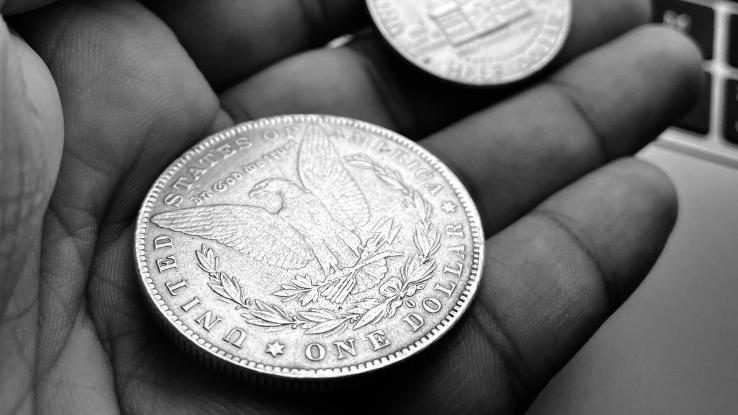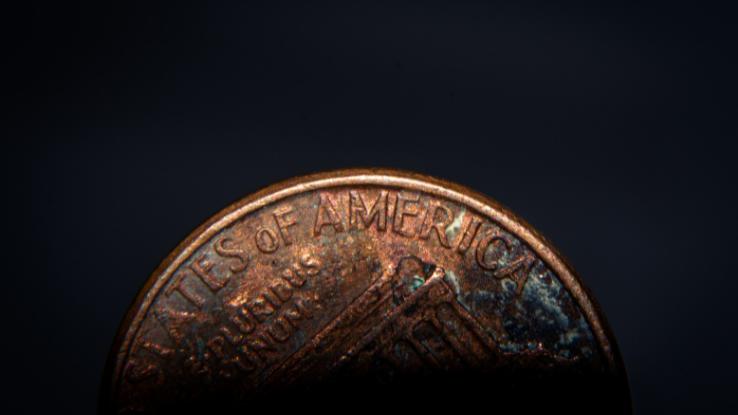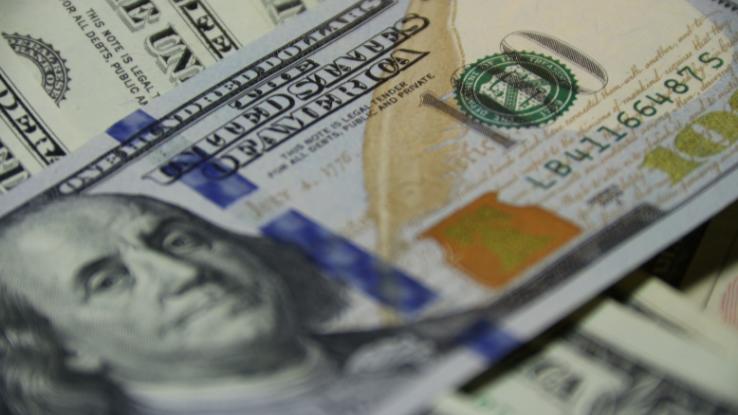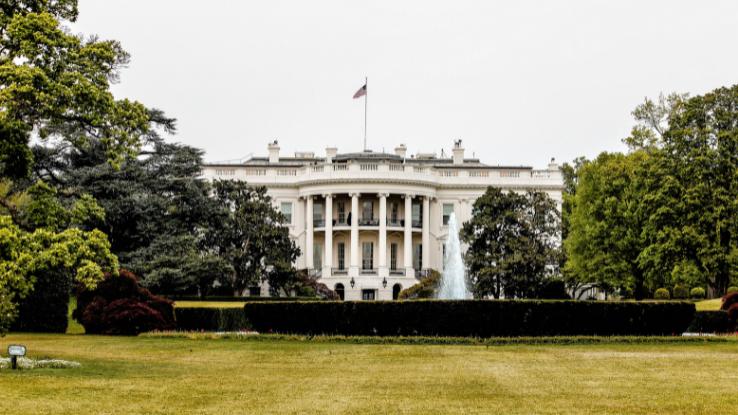What Is a Coin Shortage, and Are We Facing One Right Now?

If you paid for something in cash recently, you may not have received the full amount of change that was owed to you. In fact, some retailers had to put a temporary hold on cash transactions in general. The reason for this, like many other inconveniences in the last few years, stemmed from the COVID-19 pandemic. When businesses aren’t able to use cash for legal tender, a financial domino effect occurs, and vulnerable people tend to be affected the most.
The proverbial salt in the wound is that the U.S. has safety nets and regulations in place to protect our currency in a coin shortage, and throughout history, the United States has had to adjust the ways its coins are made and how many are produced. The coin supply chain issues we’ve recently faced should be considered less of a failure on the behalf of the U.S. Mint in particular and more of a reason to acknowledge the severity of COVID-19 and the problems it caused.
The U.S. Coin Task Force was established last year — which was probably not on anyone’s 2020 bingo card. To learn more about this task force, protective legislation to prevent coin supply chain issues and other efforts to make sure everyone has the coins they need, read on below.
Get That Coin: A Brief Look at Coinage in U.S. History
Since the late 1700s, there have been eight major Federal Coinage Acts implemented to regulate coinage and establish the U.S. Mint. Periodically the U.S. needs to reevaluate its money system to better facilitate economic transactions. Part of this involves the U.S. making physical changes to its money, which it does through coinage acts. Theoretically, if there was a need or even a want, Congress could pass an act that stops the use of different materials like copper or nickel in our coin production. The Government could also create new coins with new values.

Here is a quick breakdown of several important U.S. coinage acts:
The Coinage Act of 1792 established the U.S. Mint. Prior to this, Americans used Continental currency, which needed an overhaul. Different states were using different currencies, and some people were also using foreign money. A standardized national currency was needed. Coins ranged from ha’pennies (half a cent) to “gold eagles” that were worth $10 each at the time. Paper money had been in use since the 1690s, but it was mostly used in credit or I.O.U. scenarios.
The 19th century brought change to American money. The Coinage Act of 1834, signed by Andrew Jackson, reestablished the weights of certain coins. The Coinage Act of 1849 added two gold coins — the golden dollar and the $20 double eagle — into the mix, which was largely made possible thanks to the California Gold Rush. The Coinage Act of 1853 lowered the amount of silver in coins in response to an ongoing silver shortage. The Coinage Act of 1857 prevented foreign currency from being used as legal tender, encouraging folks to exchange foreign currencies, and the Coinage Act of 1864 brought a 2 cent coin into circulation. The lowering of silver content and newly introduced currencies were both implemented to help fund the United States Civil War.
The Coinage Act of 1873 was more of a game-changer. Prior to this point, the U.S. embraced “bimetallism” and based the worth of its currency on the actual values of both silver and gold. This act again lowered the silver content in U.S. coins and ended the practice of tying coins’ values to silver, ultimately leading the country to follow the “gold standard” system and abandon bimetallism.
The Coinage Act of 1965 dealt specifically with coin shortages. Coming out of the Great Depression, the United States was experiencing prosperity unlike ever before. Coins were used for everything from payphones to school lunches.
But, there was a silver shortage. It grew so extensive that people began hoarding quarters and dimes the same way some people hoarded toilet paper in 2020. This meant that the Mint needed to ramp up production of these disappearing coins to keep them in circulation, and it introduced half-dollar coins and “silver dollars” as stop-gaps. These coins were composed of multiple metals, including nickel to give them a silvery appearance, and known as “clad coins.” These new coins were added to the circulation of currency, and quarters and dimes were no longer made with any silver, effectively ending the shortage caused by hoarding. Silver-colored coins are still made the same way today: with copper and nickel.
Despite all of these protections put in place over time, the U.S. still has not quite perfected the production and circulation of money. The nation has made it 50 years without needing another coinage act, but 2020 brought the U.S. very close. This could signify that there’s a diminishing need for coins with so many people now going digital and using less paper money. But it’s important to remember that, no matter how technologically advanced we get, there will always be a need for physical currency.
Make no mistake — if a coin shortage happens because of prosperity or hard times, it is still a bad thing for everyone. Yes, it’s easier than ever to be fully digital with all of your money. But, not everyone is able to maintain a bank account and instead may need to rely primarily on using cash. Differently-abled people may have trouble accessing banks. Folks in lower-income neighborhoods are more likely to have to travel farther to get to a bank, so banking comes with higher financial and time costs for them. Banking fees can outweigh the benefits of a bank for many people, too.
The Opposite of Cash-Only: The COVID-19 Scramble of 2020
When “lockdown” began in March of 2020, no one knew how long the COVID-19 pandemic would last. A few weeks turned into a month — and then a year. During that time, there were a number of different shortages because supply was unable to meet demand in a variety of ways. People were hoarding toilet paper from Costco, buying up weight sets and stockpiling everything else, from ammunition to Crocs.

Fewer people were going out and spending. Even fewer people were working in financial institutions that helped keep the regular circulation of currency flowing at its typical pace. Retailers across the country were running out of change across the board. Quarters, dimes, pennies — all of it was running out.
A notable percentage of folks believed that the coin shortage was intentionally caused by the government. People were so upset and potentially frightened by the coin shortage that some believed the government was holding on to all the coins as a first step in transforming the country into a cashless society.
This is not true. The government insists that the shortage happened due to closures across the country, with the Federal Reserve explaining, “business and bank closures associated with the COVID-19 pandemic significantly disrupted the supply chain and normal circulation patterns for U.S. coins. This slowed the pace of circulation and reduced available inventories in some areas of the country during 2020.” People weren’t able to work in person at banks to keep the money circulating. Those banks and most other businesses weren’t open for their normal number of hours, and some weren’t open at all.
Think about all the restaurants and bars that closed down due to the pandemic. Even those that reopened weren’t moving as much physical currency as before, especially change. Delivery apps like DoorDash and Grubhub became the norm, and tipping in cash felt like a thing of the past. It didn’t help that plenty of folks were intentionally not using coins in order to prevent the spread of germs. The federal coin shortage got to the point where it needed special intervention: its very own task force.
The U.S. Coin Task Force and Coins for Tomorrow
In July 2020, the U.S. Coin Task Force was formed to tackle the issue head-on. The group consisted of folks like Patrick Hernandez, the Deputy Director of the U.S. Mint; Ashley Yayock of Walmart, representing retailers; and folks from the Federal Reserve Banks in San Francisco and Atlanta like Kathleen Young, Amy Burr and Jeff Thomas. Their first move was a call to action in the summer of 2020.

The task force urged Americans to spend their spare change and exchange coins at dropoff machines. As time went on, the group compiled different resources for different types of businesses struggling with the COVID-19 pandemic. These include resources for retailers, supply chains and financial institutions — and even resources for families and kids. The task force also developed practical strategies to promote coin redemption and coin spending and provided these resources online.
In 2021, the task force has begun reallocating coins in case any institutions are in need of them. Production has ramped up, so there should be enough coins for everyone for now. Despite the shortage, more coins were produced in 2020 than in 2019, if you can believe it. In 2020, the U.S. produced $14.8 billion in coins. In 2019, only $11.7 billion worth of coins were produced, so there are more now that are ready to be circulated.
Regarding the current coin situation, things seem to be on track. Hopefully, as the world continues to get vaccinated and reopen, shortages like these can level out. Better yet, maybe we’ll find a cleaner way to exchange currency down the road. Until then, make sure you spend and save your coins. They may be worth something someday, and they may become more than handy if we experience another coin shortage.





